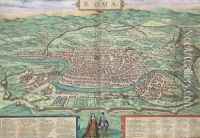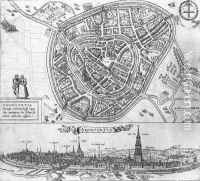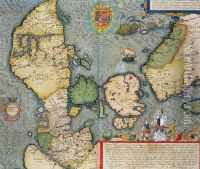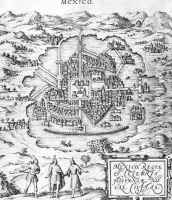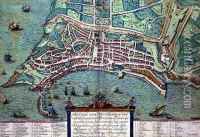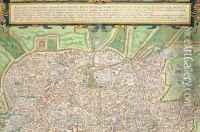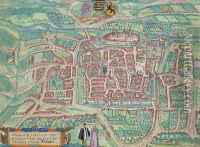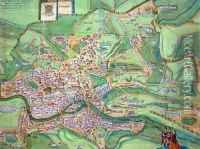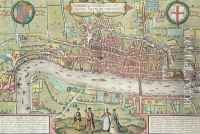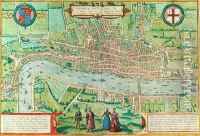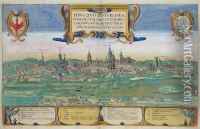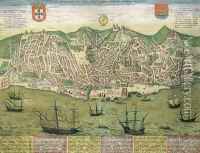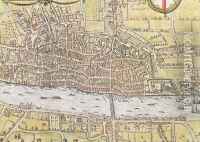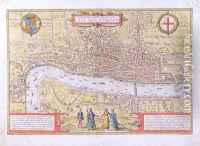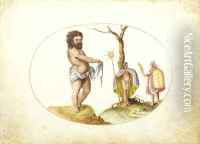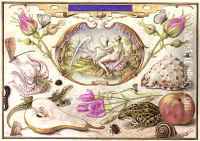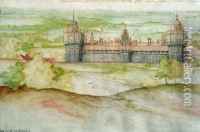Joris Hoefnagel Paintings
Joris Hoefnagel was a significant figure in the Northern Renaissance art movement, celebrated for his contributions to miniaturism, manuscript illumination, and topographical drawings. Born in 1542 in Antwerp, then part of the Habsburg Netherlands, Hoefnagel came from a wealthy family, which allowed him to travel extensively throughout Europe and receive an excellent education.
His travels played a key role in his artistic development, exposing him to various artistic styles and practices. Hoefnagel's work often combined elements of scientific precision and an intricate attention to detail, which was typical of the Northern Renaissance. He was particularly known for his illuminations in manuscripts, a tradition that was already becoming obsolete due to the advent of the printing press. Despite this, his works were highly valued for their artistry and craftsmanship.
In the 1560s, Hoefnagel visited England and France, and later Italy, where he was influenced by the works of the Italian masters. In Rome, he studied classical antiquities and Renaissance art, which would later influence his own artistic style. Subsequently, he returned to the Low Countries and began working as an artist and printmaker.
One of his most notable contributions was his collaboration with the cartographer Abraham Ortelius. For Ortelius’s famed atlas, 'Theatrum Orbis Terrarum', Hoefnagel provided illustrations of cities and landscapes, which were among the earliest examples of accurate and detailed topographical depiction in print.
His diverse oeuvre includes a wide range of subjects, such as intricate studies of nature, allegorical scenes, and detailed cityscapes. Hoefnagel also became a court artist to the Holy Roman Emperor Rudolf II in Prague, where he created some of his most exceptional works, including the 'Four Elements' series, representing earth, water, air, and fire with an array of animals and insects rendered in meticulous detail.
Joris Hoefnagel's art was an amalgamation of scientific observation and artistic elegance, and it played a pivotal role in the transition from manuscript to printed book illustration. He provided a link between the Flemish artistic traditions and the emerging Baroque style. Hoefnagel passed away in 1600, leaving behind a legacy that would influence generations of artists, especially in the realm of natural history illustration.
